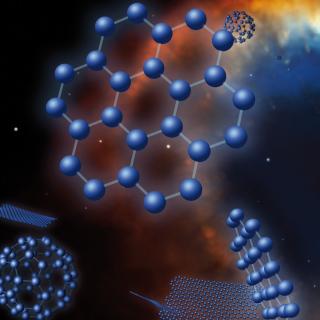Bibcode
Martig, M.; Rix, Hans-Walter; Aguirre, Victor Silva; Hekker, Saskia; Mosser, Benoit; Elsworth, Yvonne; Bovy, Jo; Stello, Dennis; Anders, Friedrich; García, Rafael A.; Tayar, Jamie; Rodrigues, Thaíse S.; Basu, Sarbani; Carrera, R.; Ceillier, Tugdual; Chaplin, William J.; Chiappini, Cristina; Frinchaboy, Peter M.; García-Hernández, D. A.; Hearty, Fred R.; Holtzman, Jon; Johnson, Jennifer A.; Majewski, Steven R.; Mathur, Savita; Mészáros, Szabolcs; Miglio, Andrea; Nidever, David; Pan, Kaike; Pinsonneault, Marc; Schiavon, Ricardo P.; Schneider, Donald P.; Serenelli, Aldo; Shetrone, Matthew; Zamora, O.
Bibliographical reference
Monthly Notices of the Royal Astronomical Society, Volume 451, Issue 2, p.2230-2243
Advertised on:
8
2015
Citations
171
Refereed citations
148
Description
We derive age constraints for 1639 red giants in the APOKASC sample for
which seismic parameters from Kepler, as well as effective temperatures,
metallicities and [α/Fe] values from APOGEE DR12 (Apache Point
Observatory Galactic Evolution Experiment Data Release 12) are
available. We investigate the relation between age and chemical
abundances for these stars, using a simple and robust approach to obtain
ages. We first derive stellar masses using standard seismic scaling
relations, then determine the maximum possible age for each star as
function of its mass and metallicity, independently of its evolutionary
stage. While the overall trend between maximum age and chemical
abundances is a declining fraction of young stars with increasing
[α/Fe], at least 14 out of 241 stars with [α/Fe] >0.13
are younger than 6 Gyr. Five stars with [α/Fe] ≥0.2 have ages
below 4 Gyr. We examine the effect of modifications in the standard
seismic scaling relations, as well as the effect of very low helium
fractions, but these changes are not enough to make these stars as old
as usually expected for α-rich stars (i.e. ages greater than 8-9
Gyr). Such unusual α-rich young stars have also been detected by
other surveys, but defy simple explanations in a galaxy evolution
context.
Related projects

Nucleosynthesis and molecular processes in the late stages of Stellar Evolution
Low- to intermediate-mass (M < 8 solar masses, Ms) stars represent the majority of stars in the Cosmos. They finish their lives on the Asymptotic Giant Branch (AGB) - just before they form planetary nebulae (PNe) - where they experience complex nucleosynthetic and molecular processes. AGB stars are important contributors to the enrichment of the
Domingo Aníbal
García Hernández

Chemical Abundances in Stars
Stellar spectroscopy allows us to determine the properties and chemical compositions of stars. From this information for stars of different ages in the Milky Way, it is possible to reconstruct the chemical evolution of the Galaxy, as well as the origin of the elements heavier than boron, created mainly in stellar interiors. It is also possible to
Carlos
Allende Prieto